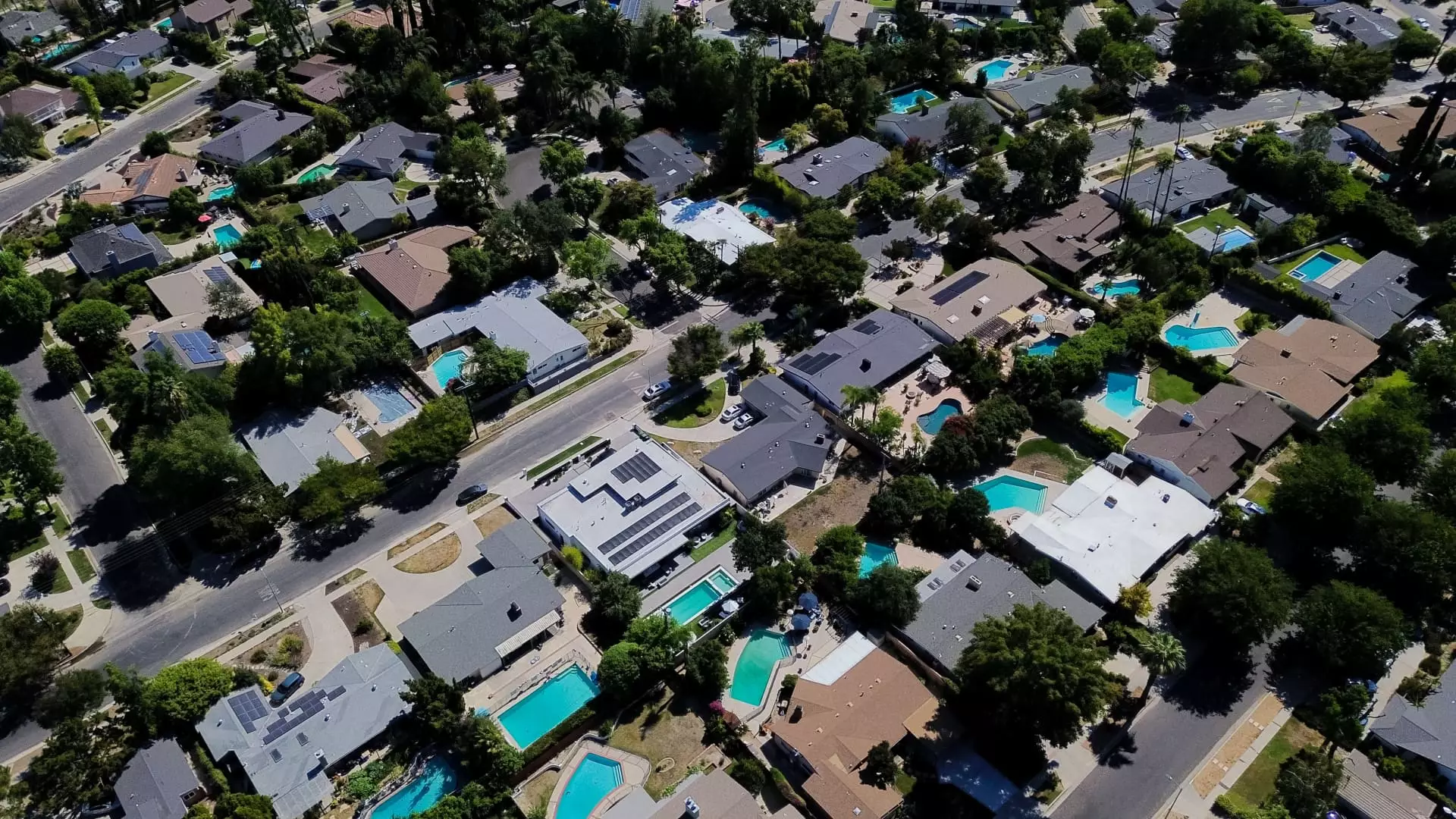The recent perforation in the U.S. housing market reveals a landscape that is far from healthy, despite surface-level stability. June’s sales figures, which plunged by 2.7%, sharply diverge from economist expectations of a mere 0.7% decline, exposing an underlying malaise driven by unnatural market forces. This disconnect indicates that the market’s apparent sluggishness may be masking deeper structural issues. When sales stagnate, especially against the backdrop of high mortgage rates, it suggests that affordability has become an insurmountable barrier for aspiring homeowners. This creates a paradox: demand is technically present but practically unattainable, leading to a market that is both fragile and artificially inflated.
The fact that sales numbers remain unchanged from June 2024 underscores the stagnation. These figures derive from transaction closings, which are inherently lagging indicators of market sentiment. The initial contracting force—rising mortgage rates—has long been a bulwark against buying enthusiasm, with averages hovering around 6.77%. As mortgage rates refuse to retreat despite economic uncertainties, it becomes increasingly evident that housing affordability is suffering—a phenomenon that, if persisted, could lead to a significant depletion of middle-class homeownership aspirations.
Supply and Price Dynamics: A Growing Trap for Buyers
While one might expect a downturn to bring price relief, the market’s stubborn increase in home prices suggests an entirely different story. The median home price rising to $435,300—marking a consecutive 24-month increase—is a testament to the enduring imbalance between supply and demand. This price trajectory, fueled by years of underbuilding and sluggish construction, underpins a market increasingly out of reach for first-time buyers, who now constitute only 30% of buyers, down from a healthier 40%. The broader economic narrative reveals a two-tiered market: soaring affordability for the wealthy and a retreat for the middle and working classes.
Elevated inventory levels, with 1.53 million homes listed—a 15.9% increase—contrast sharply with the persistent buyer reluctance. There remains only a 4.7-month supply, well below the 6-month threshold considered balanced. This discrepancy signals an overhang of unsold inventory that prices anchor upon, reinforcing a potential downward pressure that could destabilize the current equilibrium. The market is increasingly skewed toward the high-end segment, where homes priced above $1 million are selling at a 14% annual increase and moving faster due to wealth concentration among upscale buyers. Meanwhile, homes below $100,000 are slipping in both sales volume and price, indicating a widening chasm that could further fracture housing affordability and social equity.
Economic and Sociopolitical Implications of a Stalled Market
The persistent overhang of cash transactions at 29%—a figure well above pre-pandemic levels—raises concerns about speculative behaviors that risk inflating an already inflated asset class. With nearly a third of sales occurring in cash, the market appears increasingly disconnected from genuine, sustainable demand. These cash deals often resemble financial maneuvering rather than authentic housing transactions, thus distorting price signals and masking the fragility beneath.
The longer homes remain on the market, averaging 27 days, indicates cooling demand, yet it also signals that sellers are hesitant to accept lower prices. The gap between buyer capacity and seller expectations could lead to a standoff, further slowing market activity. Underpinning this stagnation is a fundamental challenge: a chronic underproduction of housing driven by regulatory hurdles, labor shortages in construction, and zoning restrictions. This supply deficiency underpins the soaring home prices, which are increasingly out of reach for average Americans.
From a policy perspective, the current trajectory warns of a looming crisis. If mortgage rates do not decline, the cycle of stagnant sales and rising prices may intensify, leading to what could be a housing bubble bursting scenario. The implications are stark: a collapse in home values, loss of wealth for homeowners, and heightened social inequality. Although the market appears resilient in some aspects, its structure is fragile, contingent on external economic factors and policy interventions that may or may not materialize in time. Whether the market can sustain its current form without a correction remains an open question, but the signs indicate that stability may be a fragile illusion we are perilously close to losing.

